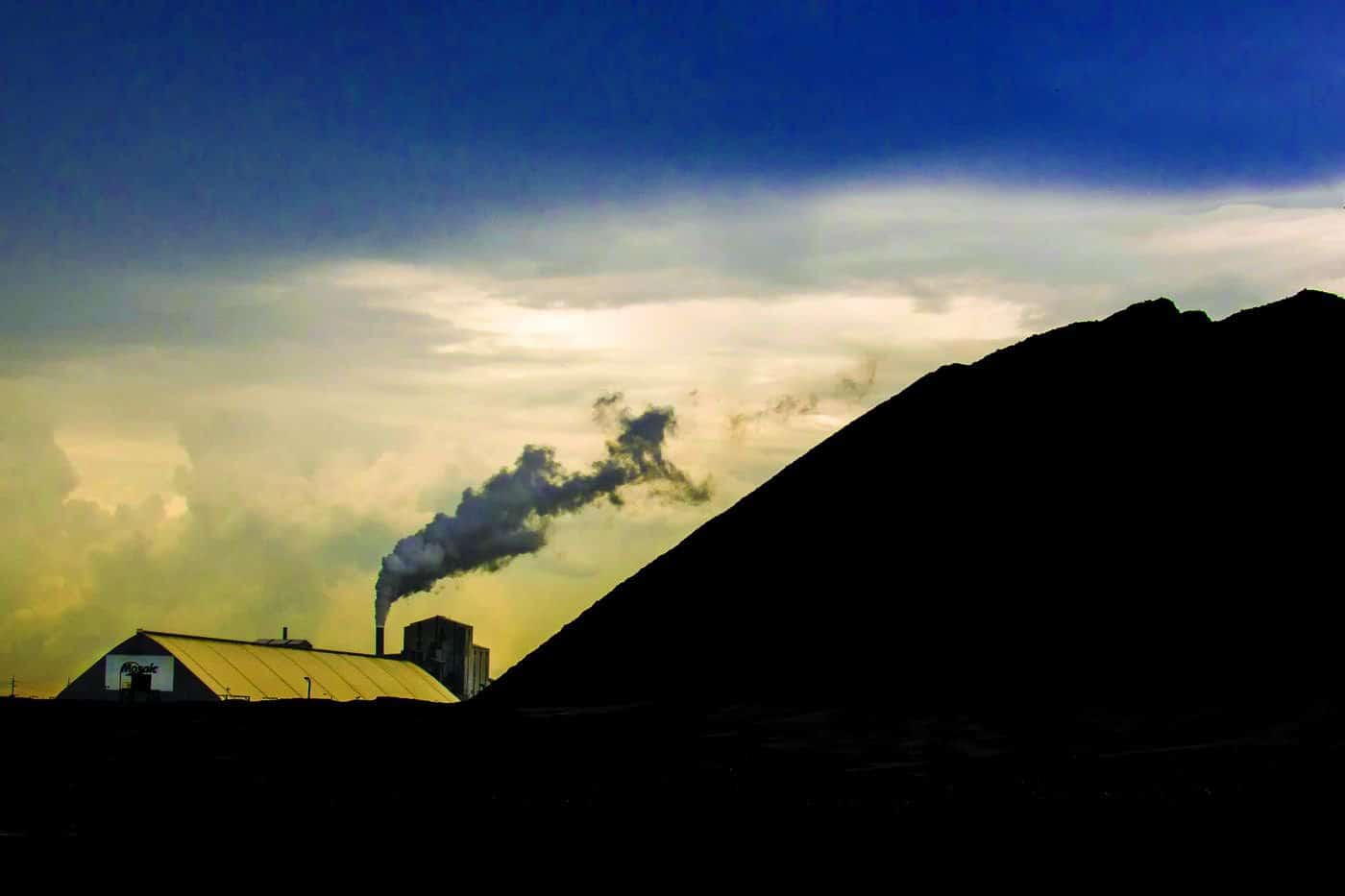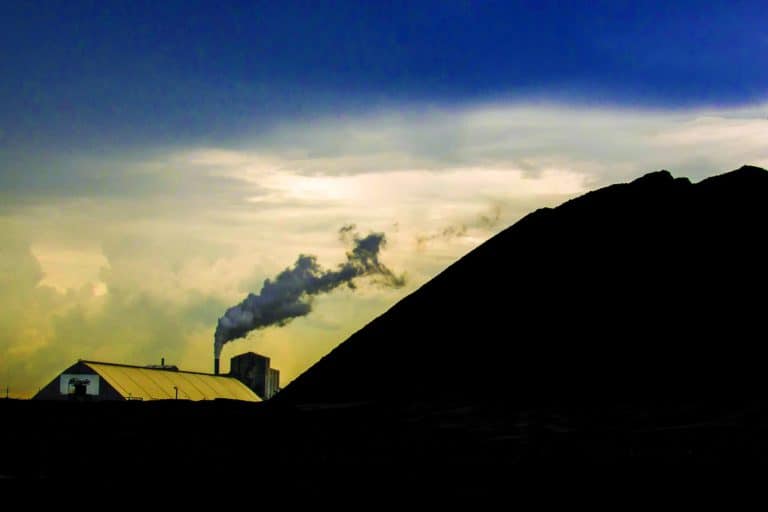One of the largest fertilizer manufacturing plants in the world sits about six miles southwest of the Polk County hamlet of Mulberry, with its entrance in walking distance of the Hillsborough County line. About 800 employees work there, turning phosphate rock into nearly 4 million tons of fertilizer and animal food ingredients every year. They also produce a lot of waste.
That’s not unusual for the phosphate industry. Drive through much of the Florida peninsula and the land you see is flat—flat as a pancake, flat as a billiard table, flat as a contestant on The Voice who’s about to get the boot. But at the Mulberry plant, and everywhere else the phosphate industry operates, you’ll see mountains.
These are massive piles of waste materials called phosphogypsum that are left over from the fertilizer manufacturing process. They rise up to 200 feet high and cover some 400 acres. On top of each one is a pond of acidic water from 40 to 80 acres in size.
Many of those mountains belong to the same company that owns the Mulberry fertilizer plant, Mosaic. It’s the biggest phosphate company in the world and a major presence in Florida.
Mosaic is currently […]
Full article: The Clock is Ticking on Florida’s Mountains of Hazardous Phosphate Waste
More about phosphate and water:
Chemicals that keep drinking water flowing may also cause fouling
26,000 tons of radioactive waste under Lake Powell
Researchers report new, more efficient catalyst for water splitting



